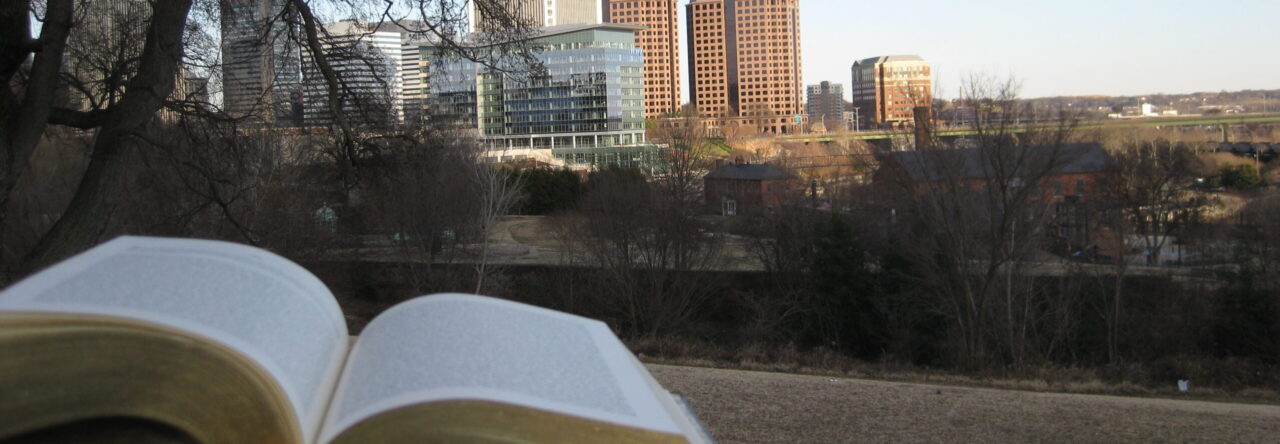We started our discussion by going around and saying our name and the name of the person whose story (from WOWO) that we are focussing on.
Julie McConnell represents youth and adults who were first arrested as juveniles. Before law school, she did a lot of work with the Virginia ACLU and inmates on death row. She was a public defender and prosecutor, and now she teaches in the law school here at the University of Richmond.
For first-time youth offenders, the case will most likely stay in juvenile court.
2nd offense: If found guilty of a felony it will stay on the child’s record for life. Misdemeanors can be expunged after 5 years of good behavior
- Some jurisdictions will charge the children as adults, while some try to keep the case in juvenile court.
- If it was a non-violent crime, less likely for incarceration.
- Children charged with grand larceny can be allowed out on an ankle monitor but for violent crimes, the ankle monitor is not an option.
- For a 16-17-year-old, it is up to the prosecutor whether to try the person as a juvenile or an adult.
- There are ways to dismiss charges after a period of supervision if the juvenile is young enough.
- The juvenile equivalent of jail is juvenile detention.
The individuals that we will be working with are in the post-sentencing stage. Most are serving 6-month sentences
- 5 months are served in the center.
- 1 month is served back at home but with a lot of supervision and stipulations.
- Many projects in Richmond. Culture of conflict between projects, and it carries into adulthood.
Brain science plays out a lot in the real world
- Science proves that the vast majority of people in the justice system age out of violent tendencies by their mid-30s.
- Early intervention is crucial, and it makes a huge difference.
Julie: Meeting our class can help the youth we’ll be working with. Interacting with people who have gone down a different path can create new positive role models and aspirations.
Family Therapy is key to youth rehabilitation
- Kids are held accountable.
- The parent needs to be held accountable as well.
- Many of the children don’t know their father
Show up for the people we’re working with
- If you say you’re showing up, show up.
- Don’t over-promise.
- Accept them, and be mindful that they are intelligent.
- Take advantage of the chance to learn from them.
- It’s going to take time to build trust and understanding with them.
- Be encouraging, and don’t assume that they are bad people just because they are incarcerated.
Policies shift between governors and presidents
- Large ideological shifts.
- Grants outside of the current ideologies often won’t get funded.
- There is a current focus on higher sentencing.
- Value in diverting cases away from court, in some circuits this is now banned
Q & A:
- Answer to Ana’s Question: Reaching out to the youth’s schools can be extremely beneficial when mixed with therapy because many solutions are right there in front of them. Connecting the youth with low-cost or no-cost extracurriculars can be very rewarding as well. Opening their eyes to options outside of video games or troublemaking is important.
- Answer to Will L’s Question: Julie and her students went through Azeem’s case and helped him to be granted a retroactive sentencing and eventually he was paroled. Julie and her clients visit clients, get to know them, and help them with their cases. She works with 10 students who each work on about 2 parole cases a semester.
- Answer to Professor Dolson’s Question: Once incarcerated there is no right to legal help, so the work that Julie and her students do is truly amazing. They do the work pro bono, and the going rate for a parole case is about $20,000. There is a racial disparity in the justice system, and pro bono work in Virginia is low.
- Answer to Julia’s Question: Students working in Julie’s clinic get a lot of credit, grades, and volunteer hours. But there is no monetary compensation.
- Answer to Angelos’ Question: Funding for these programs comes from various Virginia contracts (Department of Juvenile Justice mostly), families sometimes pay, and all clients are on Medicaid.
- Answer to Wesley’s Question: Restorative justice helps balance the focus between the victim and the perpetrator. Putting yourself in someone’s shoes gives the opportunity for greater understanding. The system is not very focused on reconciliation, unfortunately. The system should be more victim-centered. This could lead to a decrease in crime. It helps with closure.
